Macoma (Heteromacoma) nasuta (Conrad, 1837)Common name(s): Bent-nosed clam, Bent-nose Macoma |
|
| Synonyms: Macoma tersa, Macoma kelseyi | 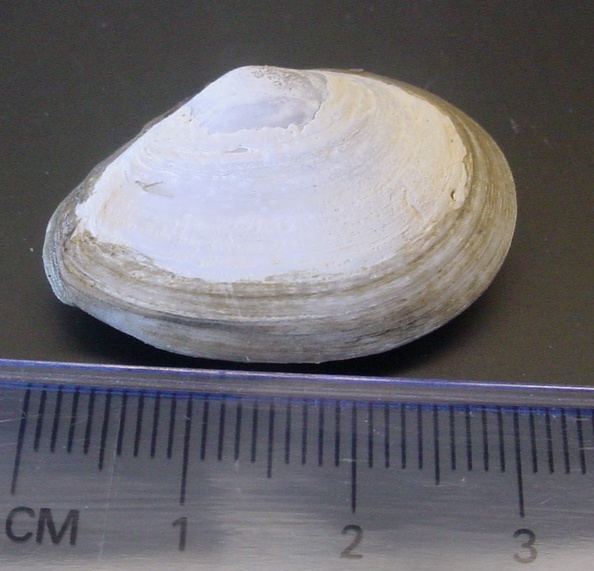 |
| Phylum Mollusca
Class Bivalvia Subclass Heterodonta Order Veneroida Family Tellinidae |
|
| Macoma nasuta from Padilla Bay, WA. Anterior is to the right. | |
| (Photo by: Dave Cowles, July 2005) | |
How to Distinguish from Similar Species: This is the only clam in this area that has the posterior ends of the valves bent to the right.
Geographical Range: Kodiak Island, Alaska to Cabo San Lucas, Baja California, Mexico
Depth Range: Low intertidal to 50 m
Habitat: Buried in mud flats; also found in gravel, sand, or muddy clay
Biology/Natural History: This common clam lies on its left side instead of vertically, at a depth of 10-20 cm. It rocks back and forth while digging. The siphons extend out the right side and up to the surface, which are well accomodated by the twist to the right of the shell. The siphons are used to suck debris from the surface of the sediment like a vacuum cleaner. The clams digest mainly diatoms and some flagellates from the sediments. They ingest large quantities of sediment but reject 97% of it, producing copious pseudofeces (photo). Hinton says the clam moves to another location when the sediment in an area has been thoroughly picked over. Predators include the moon snail Polinices lewisii. The clam was an important food of the coastal Indian tribes and to Chinese immigrants in San Francisco but is little used commercially today because of the debris that is usually in the gut. This species is very hardy and can be found in areas that have very poor circulation, and can live in very soft, silty mud. The pea crab Pinnixa littoralis or P. faba may live in the mantle cavity, as may the Nemertean worm Malacobdella grossa. The species spawns in early summer in Oregon.
| Return to: | |||
| Main Page | Alphabetic Index | Systematic Index | Glossary |
References:
Dichotomous Keys:Flora and Fairbanks, 1967
Kozloff 1987, 1996
Smith and Carlton, 1975
General References:
Brusca
and Brusca, 1978
Harbo,
1997
Harbo,
1999
Hinton,
1987
Johnson
and Snook, 1955
Kozloff,
1993
McConnaughey
and McConnaughey, 1985
Morris,
1966
Morris
et al., 1980
Niesen,
1994
Niesen,
1997
O'Clair
and O'Clair, 1998
Ricketts
et al., 1985
Sept,
1999
Scientific
Articles:
Web sites:
General Notes and Observations: Locations, abundances, unusual behaviors:
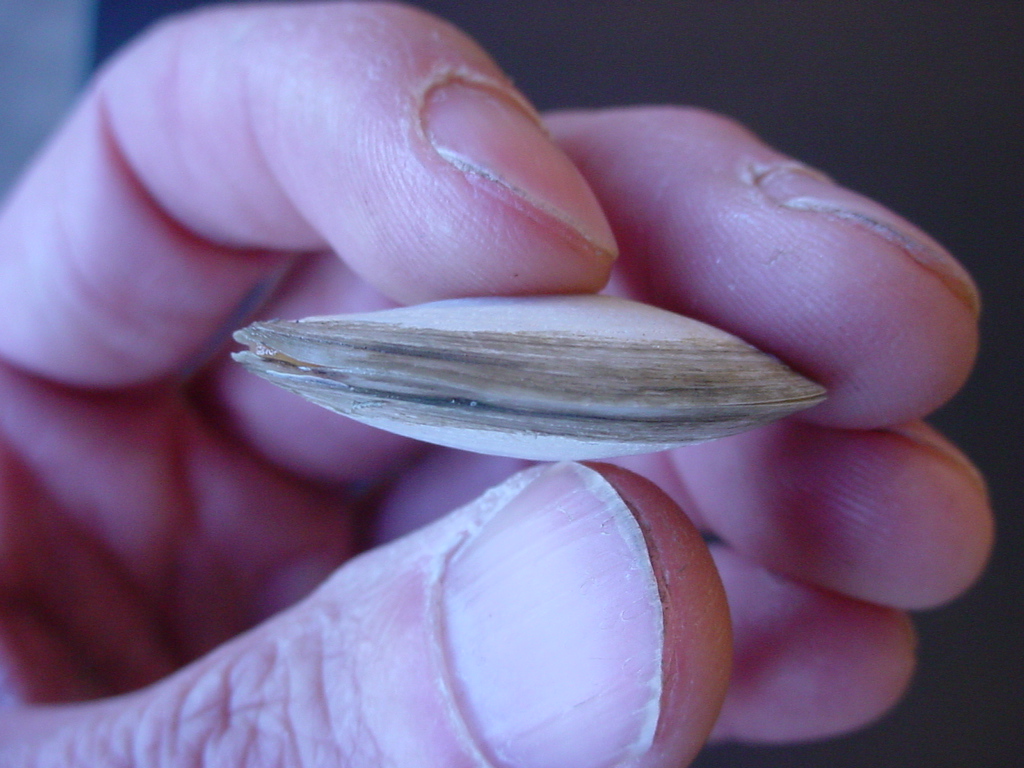
The posterior end of the shell (left in the photo above) is bent to
the right. Many individuals are bent more than this one
is.
Photo by Dave Cowles, July 2005

The "nose" of this individual, about 3.5 cm long, is bent even more. Photo by Dave Cowles, July 2020
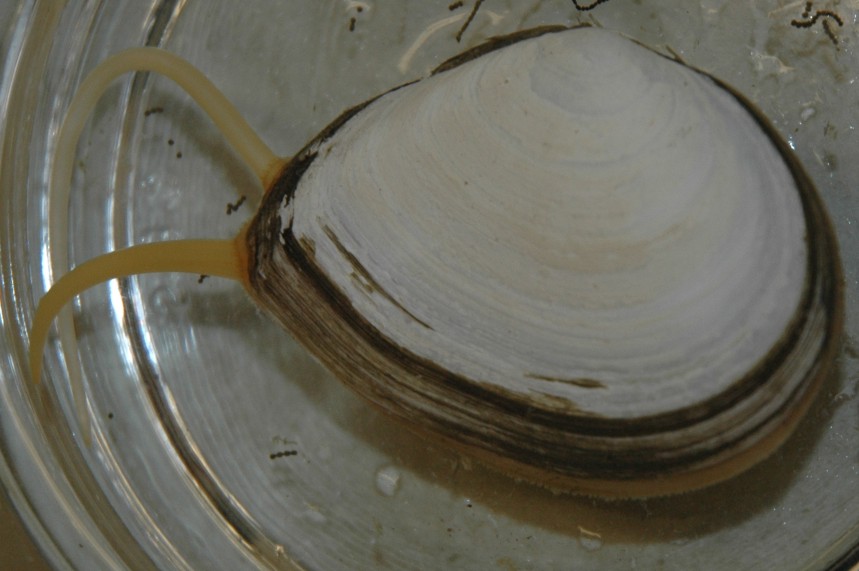
This species has long siphons which it can extend from the posterior
end of the shell and up through several cm of sediment to the surface.
They look creamy white when extended but look more orange when they
are retracted.
This species sucks in sediment, digests out some diatoms and
flagellates,
and rejects the majority of the sediment leading to copious production
of pseudofeces, as seen in the photo.
The nose is bent because the clam lives in this position-on its
side, so must extend the siphons up and to the side to reach the
sediment surface.
Photo by Dave Cowles, August 2005
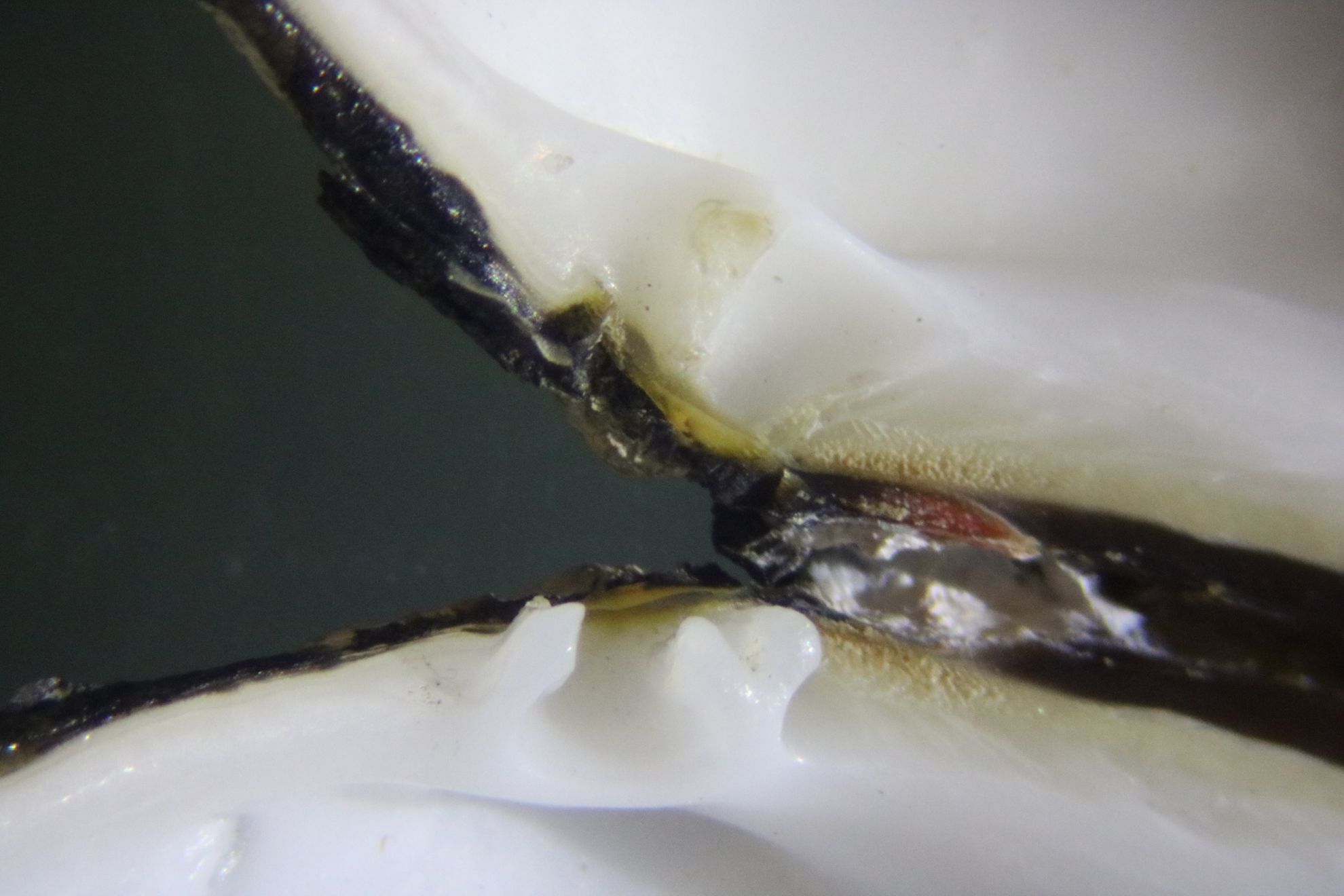
A closeup of the hinge teeth. There are two cardinal teeth on both valves. The tooth on the right is bifid. Photo by Dave Cowles, July 2020
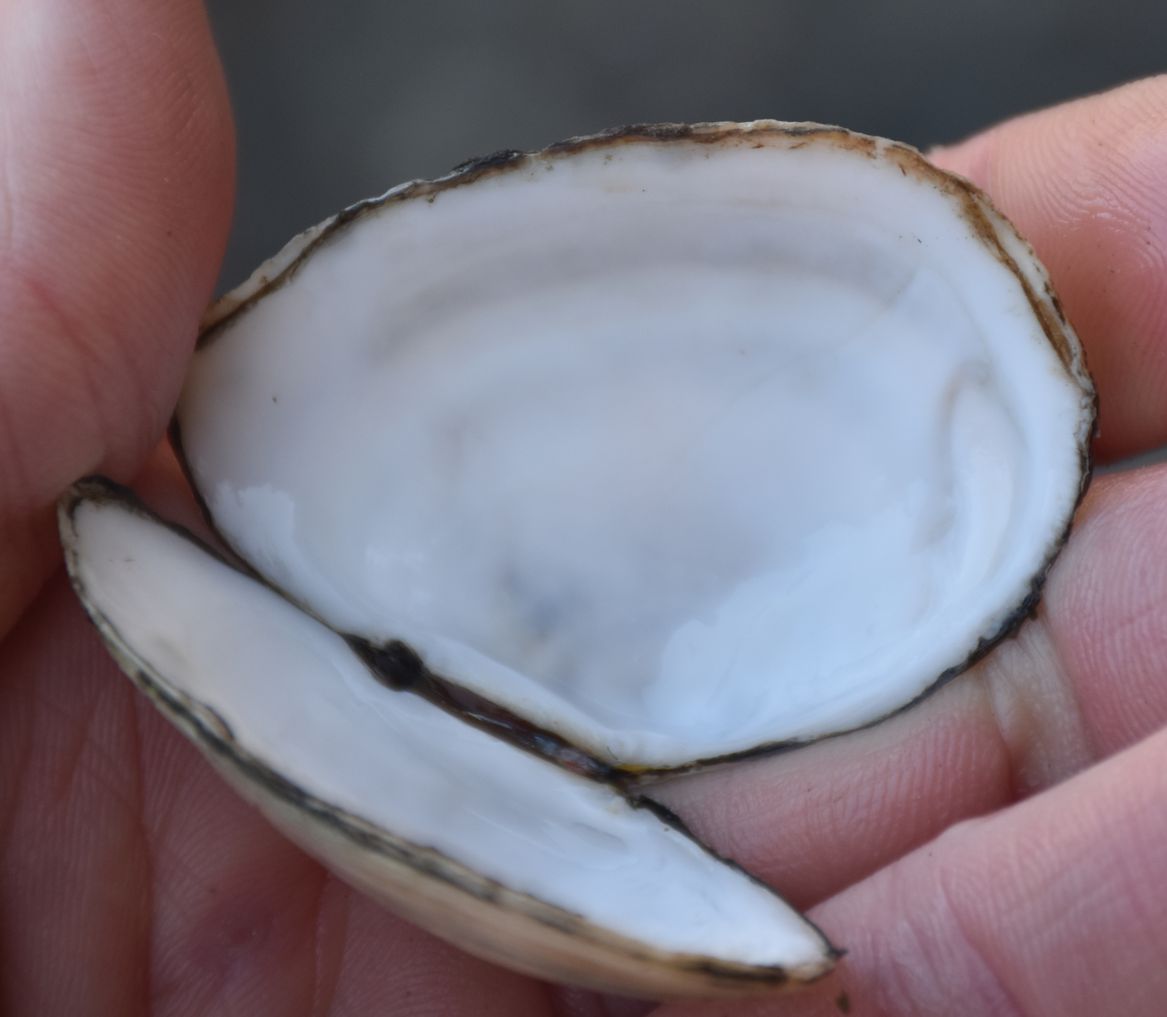
A view of the pallial line and pallial sinus. The posterior (siphon) end of the clam is to the left. Notice how the pallial sinus is so deep that it penetrates as far anterior as the anterior adductor muscle scar. Photo by Dave Cowles, July 2020
Authors and Editors of Page:
Dave Cowles (2005): Created original page